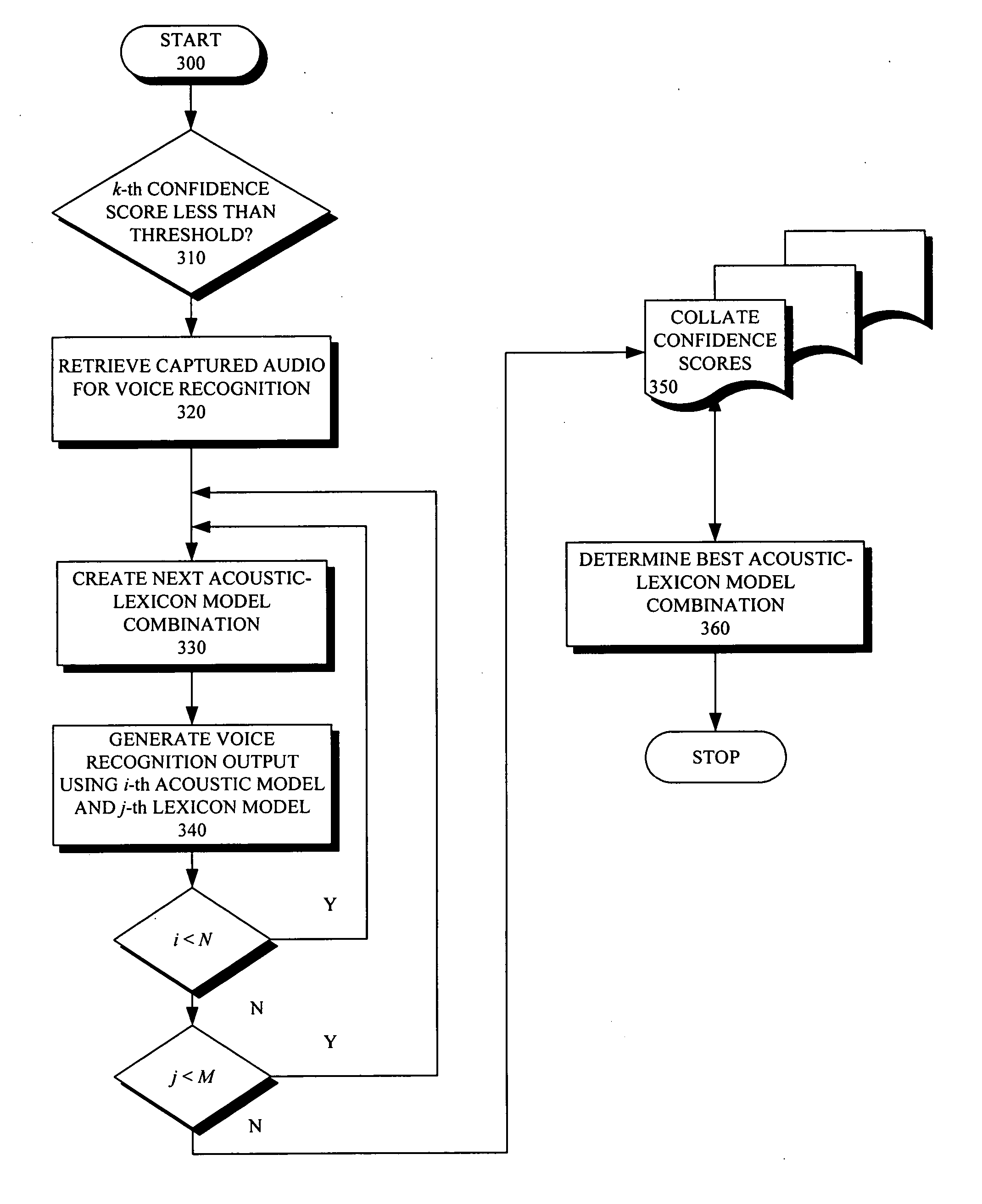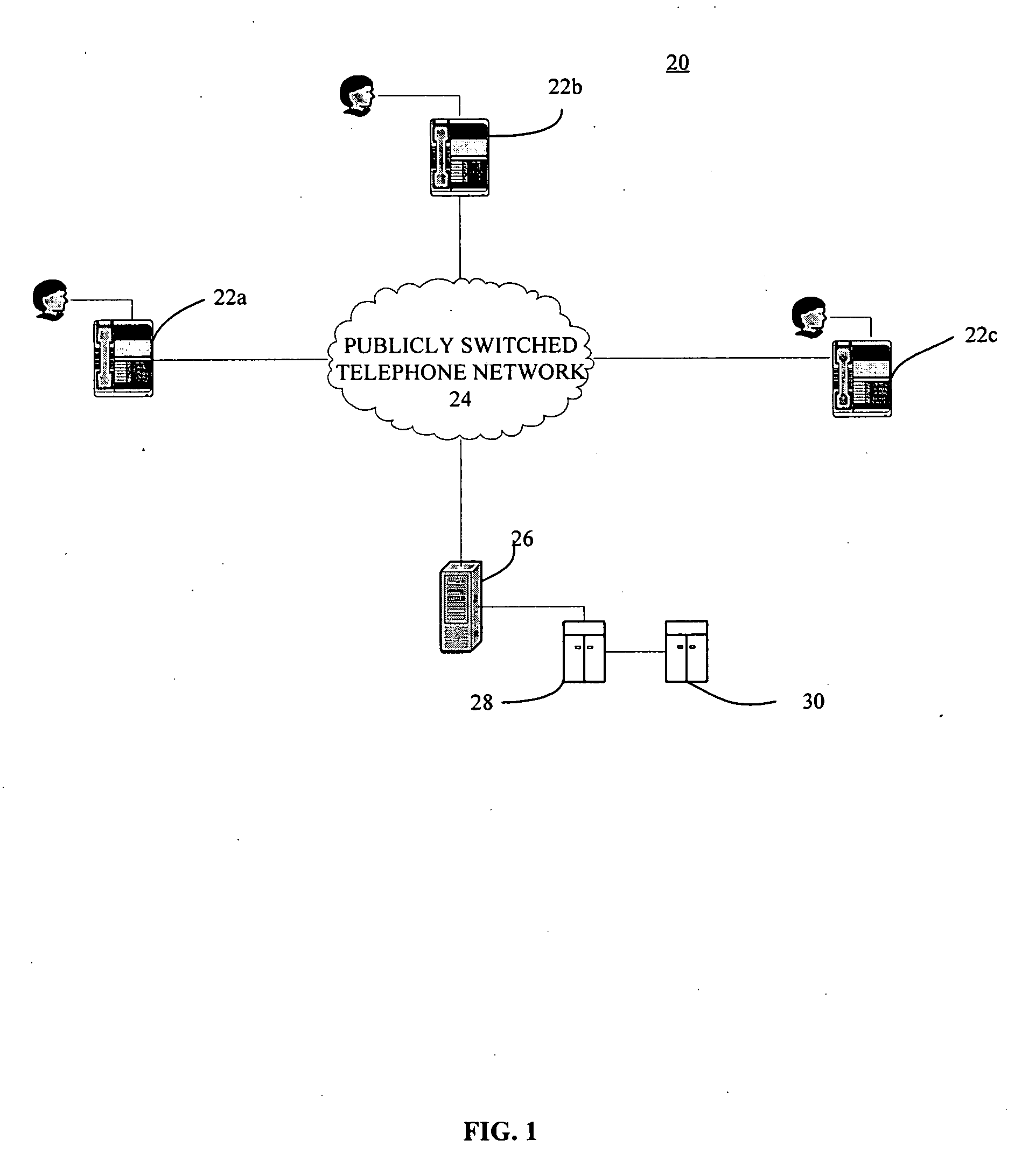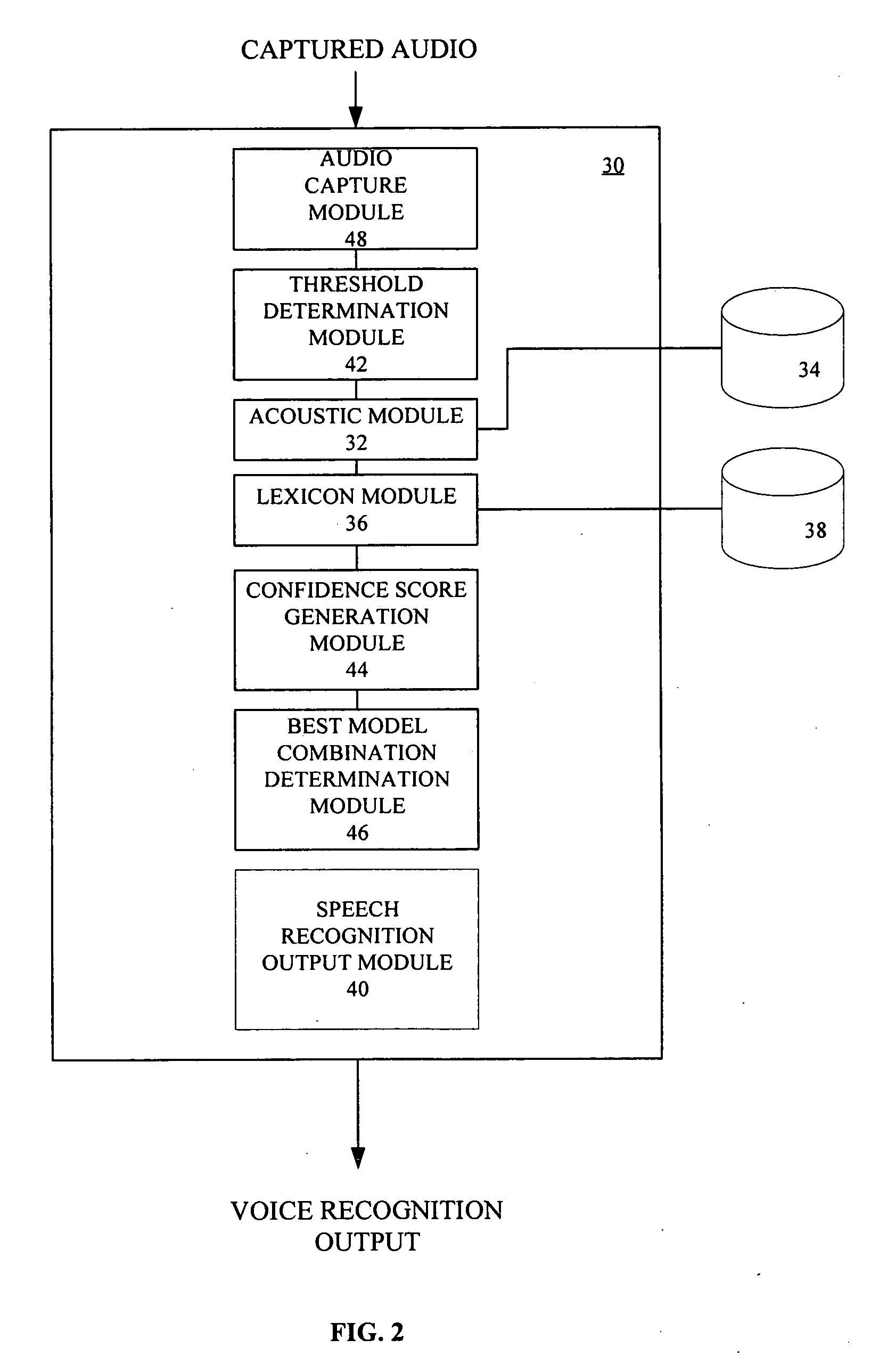Method and system for identifying and correcting accent-induced speech recognition difficulties
- Summary
- Abstract
- Description
- Claims
- Application Information
AI Technical Summary
Benefits of technology
Problems solved by technology
Method used
Image
Examples
Embodiment Construction
[0020]FIG. 1 provides a schematic diagram of a communications network 20, which includes a system 30 according to one embodiment of the present invention. Although the invention is discussed in the context of the communications network 20, it is to be understood that the communication network represents only one environment in which the system 30 can be advantageously employed. Many other uses and applications of the system 30 in different communication and data processing environments will be apparent from the description provided herein. Indeed, the system 30 can be advantageously used with any telecommunication or data processing device in which data, instructions, or other information is inputted in the form of human speech.
[0021] As shown in FIG. 1, the communication network 20 illustratively includes a plurality of telephones 22a, 22b, 22c that connect a multiplicity of callers via a publicly switched telephone network 24 to a voice server 26. The voice server 26 can be used ...
PUM
 Login to View More
Login to View More Abstract
Description
Claims
Application Information
 Login to View More
Login to View More - R&D
- Intellectual Property
- Life Sciences
- Materials
- Tech Scout
- Unparalleled Data Quality
- Higher Quality Content
- 60% Fewer Hallucinations
Browse by: Latest US Patents, China's latest patents, Technical Efficacy Thesaurus, Application Domain, Technology Topic, Popular Technical Reports.
© 2025 PatSnap. All rights reserved.Legal|Privacy policy|Modern Slavery Act Transparency Statement|Sitemap|About US| Contact US: help@patsnap.com



